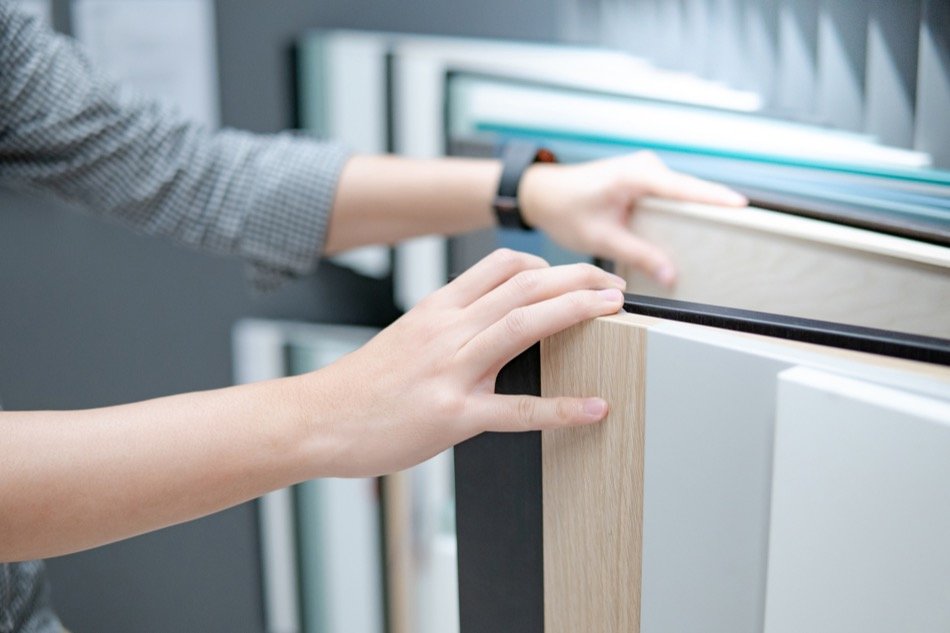Countertop Upgrade Guide
Posted by Justin Havre on Tuesday, September 3rd, 2019 at 7:35am.
 Kitchen renovations constitute big business on the home scene, and one of the most common upgrades includes replacing older kitchen counters. The midrange value of a kitchen remodel in 2018 topped $63,000. If a kitchen redo is in your North Calgary home future, here's what you should know about the various types of counter materials, their cost and their expected return on investment.
Kitchen renovations constitute big business on the home scene, and one of the most common upgrades includes replacing older kitchen counters. The midrange value of a kitchen remodel in 2018 topped $63,000. If a kitchen redo is in your North Calgary home future, here's what you should know about the various types of counter materials, their cost and their expected return on investment.
Here are eight of the best available options for trendy kitchen countertop types and updates:
Natural Stone
While granite and marble are perhaps the best known, soapstone is another natural stone with historical roots in New England. It is rustic, yet upscale in appearance, and is usually grey or dusty green in color. It blends well with stainless appliances and is generally easy to care for. Granite is strong, durable, scratch- and heat-resistant, but it can be expensive and must be fabricated by a professional. Marble is often used as an accent for an island or bake center. Its elegance and unique beauty are highly prized, but it also comes with a relatively high price tag. While granite and marble must be sealed, soapstone is usually rubbed with mineral oil to preserve its good looks.
Quartz or Engineered Stone
Adaptable and high-performing, these counters are a man-made alternative to natural stone, with many of the same features, including beauty and durability. They contain natural quartz and stone particles, or sometimes glass and other recycled materials, bound with a resin and formed into smooth slabs. There is almost a limitless variety of colors, patterns and edge treatments, but these counters can be pricey.
Solid Surface Materials
Counters fashioned of man-made materials are sold under a variety of brand names, and available with a variety of options, including integral sinks. Solid surface counters are easy-care, contemporary and moderately priced. One is that solid-surface counters can be burned by hot pots, although damage can be sanded out by a professional. This is a popular alternative to higher-priced natural materials.
Ceramic or Porcelain Tile
Tile is a classic look, and is indisputably the leader in terms of style variety and distinction. It is invariably the choice for period-style or European-theme kitchens. The primary disadvantage is that all tile installations require grout, and upkeep can be demanding, although newer epoxy grout resists staining and cracking. If tile is your preference, choose 1-inch mosaics or 24x24-inch floor-size tiles or any size in between; artistic shapes, colors, finishes and designs abound. All tile is brittle, but tile counters are resistant to heat damage and easy to keep clean.
Butcher Block or Wood
Simple wood counters were used in frontier homes, and butcher block has long been viewed as a specialty countertop. Now, designers are returning to hard woods as an upscale counter material, and it can be used for entire kitchens. Wood requires some care and maintenance, although it can be not only durable, but extremely forgiving. Wood is also long-lasting, hypo-allergenic and relatively easy to clean. It can be sanded and resealed, or oiled as necessary, to maintain its good looks. Price-wise, wood counters for an entire kitchen would be considered a luxury choice, but installing a section of butcher block is often cost-effective and stylish.
Modern Laminate
Not your grandmother's Formica, modern laminate is available in a dizzying array of colors, patterns and distinctive edge treatments. Newer brands also feature color-through edges, and seams are less visible than they used to be. Laminate is an inexpensive material, often used in starter homes. It can chip and stain and is difficult to repair, but it is also attractive and quite easy to maintain.
Stainless Steel or Other Metals
Stainless steel counters lend a high-tech or professional chef look to a home kitchen. They tend to scratch, but that can be part of the appeal as they age. Stainless is not bothered by heat, may be scrubbed clean, and takes a lot of abuse, but it should not be used as a cutting surface. Considered a premium countertop, stainless can be professionally fabricated to any size or shape, and adds a thoroughly modern accent to a contemporary kitchen. Other metals, included patinated or hammered copper, are increasingly used as decorative countertops on islands and serving counters, or in bar areas. They tend to age to a weathered patina if not sealed, but offer maximum appeal.
Concrete
Who would have thought that concrete would move indoors as a preferred countertop material? Stained and polished concrete is now a desirable alternative to more traditional countertop materials. Concrete can often be done by a homeowner as a DIY project. Concrete counters require professional installation, and they must be sealed and properly maintained. They are expensive, and they are also subject to cracks, just as sidewalks and driveways, if there is any movement under the surface.

